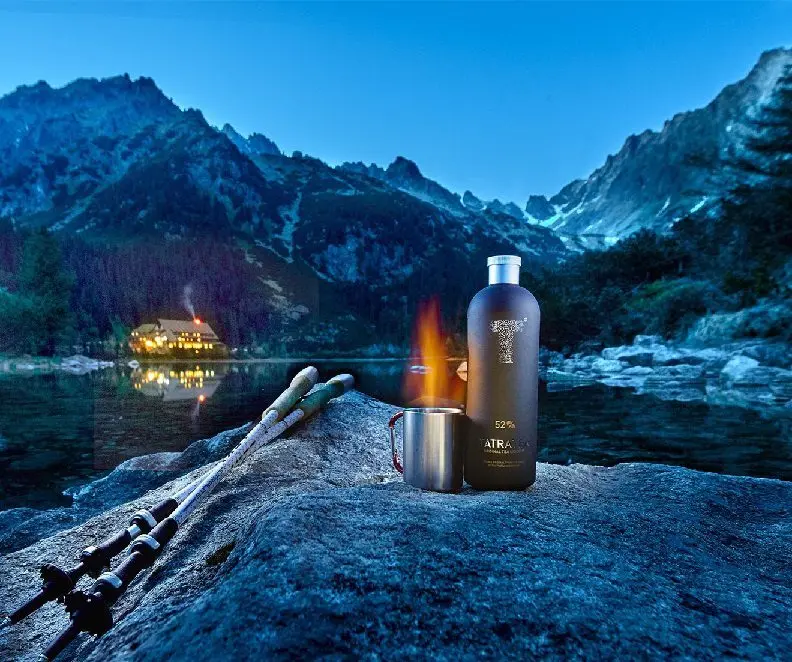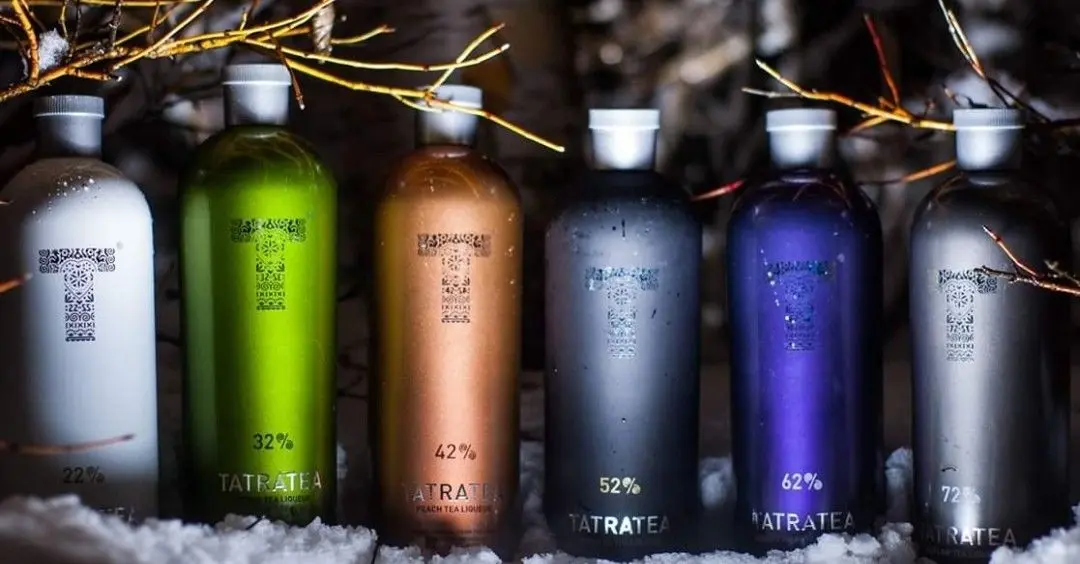Contents
Tatra tea is a national Slovak tea-based alcoholic drink. Once upon a time, hot alcoholic herbal infusions saved the inhabitants of mountainous regions from cold and colds, and in our time they have become a gastronomic attraction of the Slovak Carpathians. In recent decades, Tatrati has been produced and exported by the Karloff company, which makes it possible to evaluate the drink without going on a tourist trip. The classic liqueur has a rich taste with hints of tea and honey and can be served both cold and hot.
Historical information
The Tatras are the highest part of the Carpathians, with most of the mountain range located in Slovakia. For many centuries pastoralists who have been breeding sheep have lived here. The climatic conditions in the Tatras are quite severe, with high humidity and sudden changes in temperature. It can snow even in summer, and in winter the temperature often drops to -40 °C. The inhabitants of the highlands were saved from frost with the help of a strong tincture, which included mountain herbs, alcohol, honey and hot water. They called the drink Tatra tea.
Currently, there are several nature reserves on the territory of the Slovak Tatras, attracting thousands of tourists. Treating with Tatra tea has become a spectacular element of the tour – the liquor is poured into small glasses of 40 ml, set on fire and served to guests to the sound of shots and the clicking of a whip. Every family has its own secrets for making herbal liqueur.

The idea to establish industrial production of Tatra tea came to entrepreneur Jan Semanak in 1997, when he brought his business partner from Italy on an excursion to one of the foothill villages. An Italian businessman was delighted with the drink and wanted to take it home as a souvenir. To the surprise of the entrepreneur, he did not find tea in the stores and shared his disappointment with his partner. Jan Semanak decided to fill a gap in the market and started looking for investments to start the production of tinctures.
A Slovak businessman founded Karloff in 2002. The construction of the plant required serious investments, so at the first stage Semanak decided not to take risks and bought alcohol for tincture from other manufacturers.
The first batch of Tatratea entered the market at the beginning of 2004. Seven thousand bottles of tincture with a strength of 52% dispersed almost instantly. However, the company then ran into difficulties. The start of sales of the second batch took place in the summer, when the demand for strong alcohol is not too high. The company had to reduce prices, which helped to quickly sell the liquor and conclude many lucrative contracts. In 2010, Tatratea liqueurs entered the international market and are now sold in 14 countries, including Russia.
Tatra tea production technology
Since 2008, Tatratea has been producing its own Karloff plant. The company is located in the industrial zone of the small town of Kezhmarok, located at the foot of the mountain range. The line includes 15 types of tinctures with different tastes and strength from 17 to 67 degrees. Alcoholic tea extracts are made from tea grown in various parts of the world.

The plant uses the technology of separate two- and three-stage maceration. The company uses alcohol from beet molasses, which contributes the sweetish notes characteristic of tea. Plant components are poured with alcohol and placed in stainless steel tanks for 60 days. Then the infusions are filtered, mixed and diluted with spring water to the desired strength. After blending, the drink is again aged for one and a half months to achieve harmony in taste.
The company does not disclose all the secrets of the recipe and composition. It is known that tea for the classic “Tatrati” is brought from the Indian province of Assam. In addition, the composition of the liquor includes raspberries, a mixture of herbs and spices, and an alcoholic extract of oak shavings brings a bright touch to the taste.
At first, Tatra tea was bottled in ordinary dark-colored glass, but after the rebranding, the shape of the bottle changed and began to resemble a thermos with a cylindrical lid. The elegant design emphasizes the premium character of the products.
Types of Tatra tea
Karloff produces three series of liqueurs with the dominance of one of the components – tea, fruits or medicinal herbs. In Russian stores, only the first line of Tatratea tea liqueur is presented, where tea extracts play the main role:
- Coconut, 22% – sweet tincture with coconut;
- Citrus, 32% – based on fruit tea, lime and lemon juice;
- Peach, 42% – with white tea and peach;
- Original, 52% – tea-based herbal liqueur;
- Forest Fruit, 62% – with wild berries: blueberries, blueberries and strawberries;
- Outlaw, 72% – with the addition of quinine and reduced sugar content.

How to drink Tatra tea
Traditionally, Tatra tea was drunk in its pure form to keep warm during hypothermia and prevent diseases. Now in Slovak villages, tourists are offered burning shots with liquor as an aperitif before tasting national dishes – smoked sheep’s cheese, chicken goulash with mushrooms, pork knuckle on a spit.
However, it is more correct to drink Tatratea liquor as a digestif – serve after a meal in small liquor glasses. The drink must be at room temperature.
Karloff recommends adding liquor to cocktails and has developed recipes for each of its products. The ingredients are selected by the famous Czech bartender Marian Beke. Dessert Coconut master advises mixing with grape lemonade and pineapple pieces, and strong Outlaw – with ready-made cold tea, white sweet wine, lemon and honey syrup.
If you want to try a traditional Tatratea or surprise guests with a national Slovak drink, you will need Assam tea, honey and lemon. You should start with the preparation of honey – you need to heat it in a pan until hard, then add a little water to the caramel. To brew tea, use natural apple juice instead of water. Add the juice of half a lemon, tea, diluted honey to taste into a ceramic cup and pour in 40 ml of Tatratea Original. If desired, the drink can be set on fire. Classic Tatra tea is garnished with gingerbread or pine cones.










